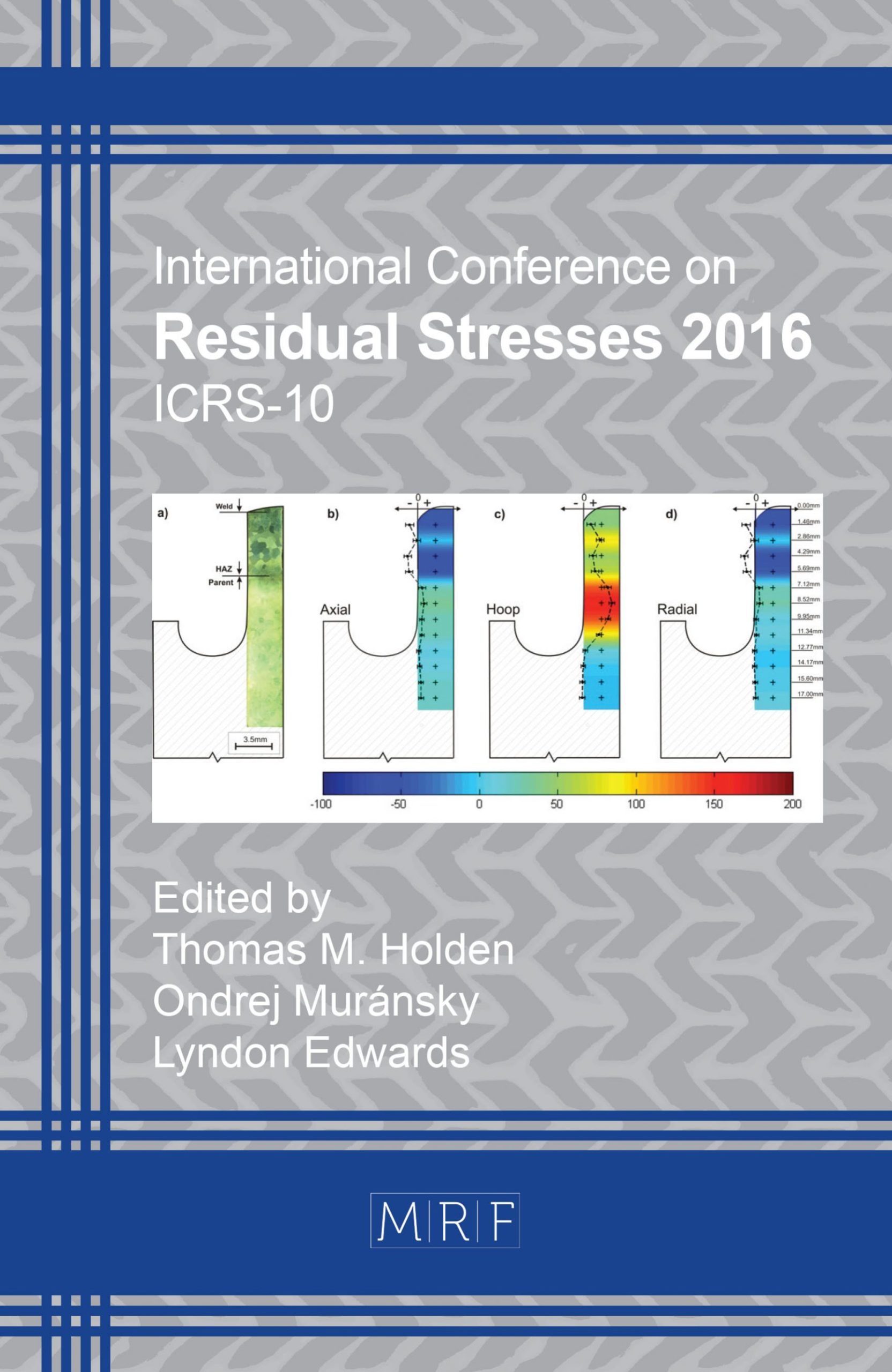Effects of Numerical Methods on Residual Stress Evaluation by the Incremental Hole-Drilling Technique Using the Integral Method
B. Gore, J.P. Nobre
download PDFAbstract. The incremental hole-drilling technique with Integral Method is widely used to estimate residual stresses. However, the fundamental nature of the Inverse Problem leads to numerically unstable results, which makes stress calculations very sensitive to measurement errors. The extent of this sensitivity is investigated by comparing different combinations of numerical methods for interpolating the input data and solving the equations. The methods are tested on both an experimental and simulated hole-drilling procedure to isolate inaccuracies due to numerical ill-conditioning and experimental errors. In the experiment, residual stresses determined by X-ray diffraction on a shot-peened sample were taken as the reference for comparison purposes. It was found that interpolating experimental data provides more stable results. Tikhonov Regularisation was more stable than direct methods, but susceptible to numerical errors introduced by the interpolation of input data.
Keywords
Residual Stress, Incremental Hole-Drilling, Integral Method, Numerical Methods
Published online 12/22/2016, 6 pages
Copyright © 2016 by the author(s)
Published under license by Materials Research Forum LLC., Millersville PA, USA
Citation: B. Gore, J.P. Nobre, ‘Effects of Numerical Methods on Residual Stress Evaluation by the Incremental Hole-Drilling Technique Using the Integral Method’, Materials Research Proceedings, Vol. 2, pp 587-592, 2017
DOI: http://dx.doi.org/10.21741/9781945291173-99
The article was published as article 99 of the book Residual Stresses 2016
![]() Content from this work may be used under the terms of the Creative Commons Attribution 3.0 licence. Any further distribution of this work must maintain attribution to the author(s) and the title of the work, journal citation and DOI.
Content from this work may be used under the terms of the Creative Commons Attribution 3.0 licence. Any further distribution of this work must maintain attribution to the author(s) and the title of the work, journal citation and DOI.
References
[1] A. Niku-Lari, J. Lu, J.F. Flavenot, Measurement of Residual-Stress Distribution by the Incremental Hole-Drilling Method, Experimental Mechanics, Vol. 25, No. 2, 1985, pp. 175-185. http://dx.doi.org/10.1007/BF02328809
[2] G.S. Schajer, Measurement of Non-Uniform Residual Stresses Using the Hole-Drilling Method. Part II – Practical Application of the Integral Method, Transactions of the ASME, Vol. 110, No. 4, 1988, Part I: pp. 338-343 and Part II: pp. 344-349.
[3] Determining Residual Stresses by the Hole-Drilling Strain-Gage Method, ASTM Standard E837, 2013.
[4] B. Zuccarello, Optimal Calculation Steps for the Evaluation of Residual Stress by the Incremental Hole-drilling Method, Experimental Mechanics, Vol. 39, No. 2, 1999, pp. 117-124. http://dx.doi.org/10.1007/BF02331114
[5] G.S. Schajer, E. Altus, Stress Calculation Error Analysis for Incremental Hole-Drilling Residual Stress Measurements, Journal of Engineering Materials and Technology, Vol. 118, No. 1, 1996, pp. 120-126. http://dx.doi.org/10.1115/1.2805924
[6] G.S. Schajer, Advances in Hole-Drilling Residual Stress Measurements, Experimental Mechanics, Vol. 50, No. 2, 2010, pp. 159-168. http://dx.doi.org/10.1007/s11340-009-9228-7
[7] S.C. Chapra, R.P. Canale, Numerical Methods for Engineers, fifth ed., McGraw-Hill, Singapore, 2006.































